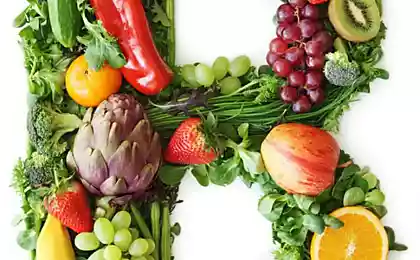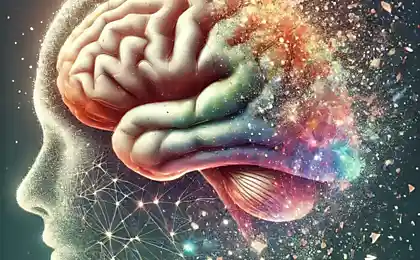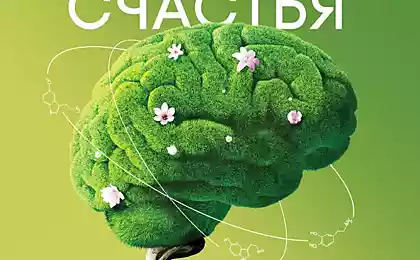766
Modern meals: eating only chemistry, not the brain to destroy themselves and others
Chemical engineer and flavorist Sergei Protein will tell you why you should not fear chemicals in food.
The modern food. Many think it is something unnatural, harmful, cause cancer, diabetes, and chronic depression. No, not because our ancestors ate before the invention of all this chemical mess. No, this is not how to feed our children, should not be in their diet components, the name of which cannot even pronounce correctly. Why can't the Ministry of health and the Federal service, when manufacturers add to our food chemistry? What hides behind the strange names and strange numeric codes with the letter E? What really should be afraid of in modern food, but that is just a fantastic fiction popular nutritionists and journalists? Sergey will try to answer these questions and to remind you that chemistry is not a curse, but a very interesting and useful science. Especially if it is "food".

"We want to know the truth about food!" — under such slogans are the defenders of real food and opponents chemical. All I want to know the truth about food. Want to know what foods are more chemistry. Natural yogurt without flavorings, preservatives and dyes with bifidobacteria supposedly very useful, as indicated on the package? Or, maybe, more chemistry in orange, which is a lucky the warm countries, was treated with pesticides? And maybe, more chemistry in hamburger known network that is not very fond for what they add chemicals? Or, maybe, more chemistry in a copper sulfate used as fungicide in agriculture? Can be more chemicals in the pack of salt, which is zero calories, no stones and cholesterol? So where is still more chemistry?
To answer this question, we look in the scientific journal Chemistry, which investigated all the products and built the list of those that do not contain chemicals. Their list was empty, because the question how many chemicals in food there is one answer. Chemistry in food exactly 100%. Everything consists of chemicals. Table of our compatriot Dmitry Mendeleev tells us that even the cheese that the Fox wants to eat consists of chemicals, because it has specific chemical, the Fox may not know about the fact that they are there, but they somehow fall into the Fox together with the cheese.
The DNA molecule is the basic molecule of life on the planet. Even as the name suggests, is a chemical molecule, as well as the ever-present bacterium, and all that it takes: movement of flagella, secretion of substances, etc. — is the result of some specific chemical reactions. And even people consists of chemicals, there are chemical formulas, chemical elements from the table, his body takes a lot of chemical processes every minute. So the fear of horror stories about "chemical food" is not necessary. But that doesn't mean we have any chemistry, because it is different. And to understand what can be eaten and what can not, you need to understand why is added chemicals in food.
Cucumber
Take, for example, a very useful vegetable, which has a lot of vitamins and water, namely the cucumber. His pimples contain liquid — a very strong poison for protection from insects and strong tasting substances that have a feature to lure parasitic wasps.
Chips
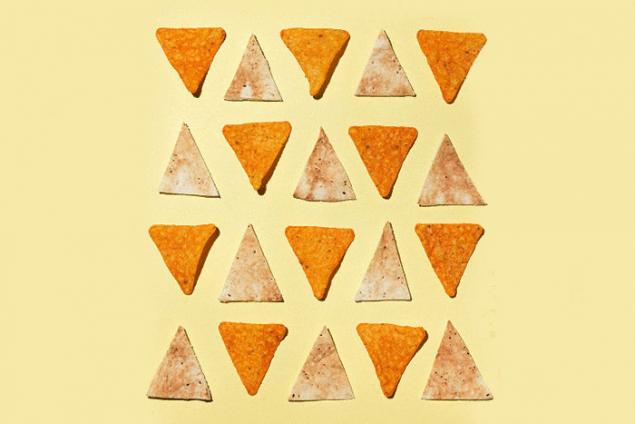
Another example is potato chips. We all know that this product is very harmful due to the fact that it consists of glutamate, flavorings, etc. in any chips is a toxic substance solanine. It is important not poisonous or non-poisonous substance, and in what quantities it is contained in the product. And if you compare the toxicity of corned beef, MSG and flavoring, which are in the chips, taking into account the actual number, it turns out that the most poisonous in the chips would be potatoes of which they are the most natural part! And that is made artificially, is much less harmful.
Cranberry
In cranberries have their own preservative — sodium benzoate, which protects and does not allow mold and bacteria to eat berries and seeds. Cranberries are in the process of evolution biologically evolved the ability to create the acid. And the person later is a property of the cranberry began to use to their advantage, realizing that if cranberries could protect their berries, we can also protect soda. This does not mean that benzoic acid is useful or harmful. But the fact remains: a "harmful preservative" appeared in nature.
Mustard
Mustard is a unique chemical weapons. Through millions of years of evolution have developed mustard, allylisothiocyanate to which it owes its pungency. This substance is formed only in the damaged plant tissues, is a natural remedy for pests, why would a man not take advantage of the achievements of natural evolution?
Almonds
Many have heard that if you eat a handful of almonds can be poisonous. And they say that if you feel the smell of almond, so next to prussic acid, and should escape from this place. Actually, almonds, as well as apples, cherries, peaches, and some other plants, indeed produces hydrocyanic acid, which is a chemical means of plant protection. Since hydrocyanic acid is a substance quite reactive and toxic, the plant can't keep it in the form of the molecule of hydrocyanic acid, it converts it to a glucoside, which upon decomposition can allocate hydrocyanic acid. And if you ate a handful of almonds — you've used the amount of glycoside that is contained in it, and inside of you he collapsed to the aldehyde and hydrocyanic acid. Aldehyde smell of bitter almonds, and hydrocyanic acid is to kill you. Therefore, if we are talking about flavors, about the smell and taste of natural almonds, that you always use a small amount of poison, and eating, flavoring, identical to natural, you absorb only without the smell of hydrocyanic acid.
Vanilla
It would seem that vanilla scent is a natural smell, but if you saw green vanilla pods, you should know that they do not smell, because green pods of vanilla not vanillin. Vanillin as a chemical substance designed not to add it in buns, but in order to protect the seeds of vanilla pods from pests. This substance is not the most useful, and it was not intended by nature to eat.
Coffee
Few would have thought that a product that is 100% of insecticides and artificial flavors, coffee. The smell of coffee does not exist in nature, as green coffee does not smell. The smell of coffee is formed in the heat treatment process in an unnatural, non-natural conditions, however, there is a huge number of substances that are in coffee, they are charred, heat, interact with each other, they are much more than in cigarettes, somewhere around 2000. Thus, the so-called natural drink is 100% from insecticides and artificial flavors.
A bit unreasonable to say that every plant in nature is useful. Almost all of them protect themselves with various chemicals. We eat organic food not because it tastes good, but because the plants are unable to develop a defense mechanism against us. The most delicious and healthy plants, which appeared in the process of evolution, was eaten, were only the most harmful and most toxic that are unable to eat.
That all natural is useful, is not entirely correct. About a hundred years ago the famous English philosopher George Moore formulated the so-called "naturalistic error". The gist of it is that there are no grounds for equating natural with "good" and unnatural with bad. Natural and not natural, good and bad are two totally different categories that we can't compare. There are many natural things that are bad. There are many artificial things that are good to eat. So when we talk about chemicals in food, we must evaluate it from the point of view of how a particular molecule is good or bad, harmful or not harmful, but not from the point of view that it is natural or not natural.
What is natural? Let's look at the composition of natural lemon. Ascorbic acid, starch, citric acid, essential oil, sucrose, water. What happens if we share the lemon on lemon wedges? We get an antioxidant, acidity regulator, flavoring, sweetener, stabilizer and water. But actually, nothing changes — it's the same molecules, albeit perhaps in a slightly different proportions.
Flavors
What can cause flavors? It is unknown whether all of these substances to obesity and Alzheimer's disease, but with autism the story is interesting. And if we look at the chart, which marked purple how much is happening in the world of autism cases, and in red the number of sales of organic food, from the graph we can make two simple conclusions. First, if the growing cases of autism, who told them to call the flavors? Maybe their causes online? Second — autistic children, according to statistics, prefer organic food.
The Index Of E
Each of us have heard that food additives with code E are harmful. Allowed list E is not based on the principle that it is an artificial substances that are added to God knows what. A list is a logical construct. If the substance studied is known for its safe dose, all about substance known to science, it will appear in the list. E — this is the last thing from the point of view of logic, should scare the consumer.
Glutamate
With monosodium glutamate story is very simple. Let's imagine what would happen if the supermarkets for products with monosodium glutamate to start a separate shelf. The rest of the shelves will remain empty, because products do not contain glutamate does not exist. There's a simple explanation. Everyone knows what hemoglobin; hemoglobin is a protein, it is in any of us. Like growth hormone, it also has protein. Protein consists of amino acids. They only have 20. Amino acids are assembled into chains, and turns the protein. One of these amino acids is glutamic acid. There isn't a single protein without glutamic acid. In different proteins contained in different amounts. In dairy, for example — 20%, other — 10%, wheat protein could be 40%. Glutamic acid is one of the most common acids in nature. When the product is protein hydrolysis, it breaks up, appear amino acids, including glutamic acid that gives flavor to foods. It has a unique taste, called "umami", which became the fifth in the line of taste, after bitter, sweet, sour and salty. Glutamic acid indicates that the product is protein.
Why red tomato is the most delicious? Because most glutamate. Or consuming cheese, which has a lot of milk protein, we somehow get glutamic acid. Its content in cottage cheese is about six times more than the strong "pereputanyi" chips. Scientists like to make different experiments: for example, they pricked glutamate neonatal mice and mouse after some time covered with fat. On this basis, they concluded that upon consumption is obesity. But the question arises why all this was done? In fact glutamate is usually consumed with a meal, not intravenously. Of course, mice will be obese, if their stabbing pure glutamate.
Isomers
Property of any molecule is defined not by where it came from, and what atoms are, and in what sequence in this molecule are included. In nature, substances with optical isomers. Some substances exist in two forms, optical isomers that kind are composed of the same atoms and the same sequence, but different substances. According to the classification conventional stores glutamate contains about 0.5% of D-isomer, ordinary cheese, which contains MSG, contains, depending on the degree of maturation from 10 to 45% D-isomer. Any permitted food additives — substances obviously proven, safe, and your health, they do not harm.
Sweeteners
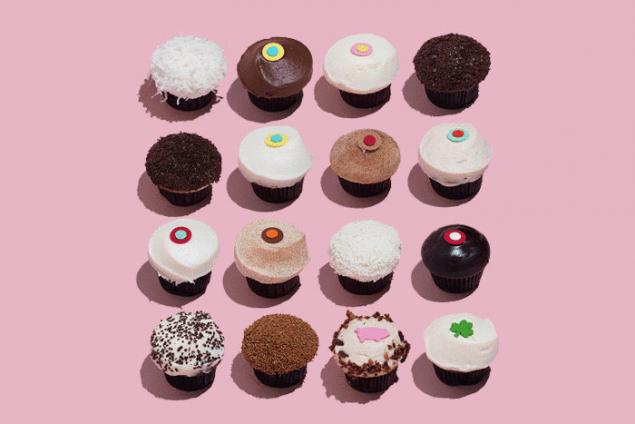
Aspartame is one of the most famous sweeteners, and nezasluzhenno blackened. Molecule when in contact with water (including in the process of digestion in your stomach or bottle of coke) is decomposed into three components: aspartic acid, phenylalanine and methanol which is a poison. To talk about the dangers of methanol, it is necessary to talk about the number, and you have to understand why it is harmful. Methanol itself is harmless, harmful also its breakdown products: formaldehyde, etc. the fact that the substance contained in the product absolutely does not mean that it is harmful in the quantities in which it is in the product.
Carcinogens
The world's first flavour is roasted meat. Those substances which are formed when frying, not natural, they investigated only recently, and when the man learned to cook, he didn't know which component of the roasted meat is harmful. However, we believe that natural meat is something useful unnatural. This is not so. The sausage, for example, contains "terrible creatine" and therefore less harmful. Or acrylamide — a carcinogen formed in fried potatoes. The secret is that he is in our kitchen, although we think it is not. It is formed by chemical means, which for all processing methods is the same. We can choose the natural method of Smoking, but in addition to the smell of smoke contains the whole set of harmful substances.
The proportion of substances
For hundreds of years, people ate natural food, which has proportion. Let's imagine a good Italian dinner of wine, pizza with Basil, tomatoes and cheese. This dinner is the proportion of substances that ate people for hundreds of years. Let's look at this ratio in the cheese. Cheese is a million varieties, and what substances are contained in cheese, depends on what bacteria it processed, what milk did, in what conditions it was produced, etc. For milk, which is part of the cheese is affected by many factors, starting with what they eat cow what kind of water she drank, etc.
The number of substances from one Basil leaf depends on where in the plant it broke, as in different parts of plants number of different aromatic substances in different. The proportions of the substances will be different in each of the leaves of the plant. Take the cheese, mix with the tomatoes, flour, eggs and put in oven where it is heated. All substances that are there interact with each other, and the result is a thousands of reactions in which new substances arise. The chemical composition of the wine and the proportions of the substances depends on what kind of grapes were used, in what conditions it was made, what was used dishes, temperature.
If we talk about fragrant substances contained in everyday food, they discovered about 8000. Of them in the food industry is allowed about 4,000. They were checked, after which it became clear that they do no harm, and can be used in flavoring. Any artificial flavoring, flavorings, consists of the 4000 that have been studied. The remaining 4000 that this list is not ranked, are present in natural products, and they have studied not only safe, but also dangerous, which was banned to use, but we consume. So, our ideas about food are far from the real situation, because even the common Apple contains a huge number of E-additives. published
P. S. And remember, only by changing their consumption — together we change the world! ©
Source: theoryandpractice.ru
The modern food. Many think it is something unnatural, harmful, cause cancer, diabetes, and chronic depression. No, not because our ancestors ate before the invention of all this chemical mess. No, this is not how to feed our children, should not be in their diet components, the name of which cannot even pronounce correctly. Why can't the Ministry of health and the Federal service, when manufacturers add to our food chemistry? What hides behind the strange names and strange numeric codes with the letter E? What really should be afraid of in modern food, but that is just a fantastic fiction popular nutritionists and journalists? Sergey will try to answer these questions and to remind you that chemistry is not a curse, but a very interesting and useful science. Especially if it is "food".

"We want to know the truth about food!" — under such slogans are the defenders of real food and opponents chemical. All I want to know the truth about food. Want to know what foods are more chemistry. Natural yogurt without flavorings, preservatives and dyes with bifidobacteria supposedly very useful, as indicated on the package? Or, maybe, more chemistry in orange, which is a lucky the warm countries, was treated with pesticides? And maybe, more chemistry in hamburger known network that is not very fond for what they add chemicals? Or, maybe, more chemistry in a copper sulfate used as fungicide in agriculture? Can be more chemicals in the pack of salt, which is zero calories, no stones and cholesterol? So where is still more chemistry?
To answer this question, we look in the scientific journal Chemistry, which investigated all the products and built the list of those that do not contain chemicals. Their list was empty, because the question how many chemicals in food there is one answer. Chemistry in food exactly 100%. Everything consists of chemicals. Table of our compatriot Dmitry Mendeleev tells us that even the cheese that the Fox wants to eat consists of chemicals, because it has specific chemical, the Fox may not know about the fact that they are there, but they somehow fall into the Fox together with the cheese.
The DNA molecule is the basic molecule of life on the planet. Even as the name suggests, is a chemical molecule, as well as the ever-present bacterium, and all that it takes: movement of flagella, secretion of substances, etc. — is the result of some specific chemical reactions. And even people consists of chemicals, there are chemical formulas, chemical elements from the table, his body takes a lot of chemical processes every minute. So the fear of horror stories about "chemical food" is not necessary. But that doesn't mean we have any chemistry, because it is different. And to understand what can be eaten and what can not, you need to understand why is added chemicals in food.
Cucumber
Take, for example, a very useful vegetable, which has a lot of vitamins and water, namely the cucumber. His pimples contain liquid — a very strong poison for protection from insects and strong tasting substances that have a feature to lure parasitic wasps.
Chips

Another example is potato chips. We all know that this product is very harmful due to the fact that it consists of glutamate, flavorings, etc. in any chips is a toxic substance solanine. It is important not poisonous or non-poisonous substance, and in what quantities it is contained in the product. And if you compare the toxicity of corned beef, MSG and flavoring, which are in the chips, taking into account the actual number, it turns out that the most poisonous in the chips would be potatoes of which they are the most natural part! And that is made artificially, is much less harmful.
Cranberry
In cranberries have their own preservative — sodium benzoate, which protects and does not allow mold and bacteria to eat berries and seeds. Cranberries are in the process of evolution biologically evolved the ability to create the acid. And the person later is a property of the cranberry began to use to their advantage, realizing that if cranberries could protect their berries, we can also protect soda. This does not mean that benzoic acid is useful or harmful. But the fact remains: a "harmful preservative" appeared in nature.
Mustard
Mustard is a unique chemical weapons. Through millions of years of evolution have developed mustard, allylisothiocyanate to which it owes its pungency. This substance is formed only in the damaged plant tissues, is a natural remedy for pests, why would a man not take advantage of the achievements of natural evolution?
Almonds
Many have heard that if you eat a handful of almonds can be poisonous. And they say that if you feel the smell of almond, so next to prussic acid, and should escape from this place. Actually, almonds, as well as apples, cherries, peaches, and some other plants, indeed produces hydrocyanic acid, which is a chemical means of plant protection. Since hydrocyanic acid is a substance quite reactive and toxic, the plant can't keep it in the form of the molecule of hydrocyanic acid, it converts it to a glucoside, which upon decomposition can allocate hydrocyanic acid. And if you ate a handful of almonds — you've used the amount of glycoside that is contained in it, and inside of you he collapsed to the aldehyde and hydrocyanic acid. Aldehyde smell of bitter almonds, and hydrocyanic acid is to kill you. Therefore, if we are talking about flavors, about the smell and taste of natural almonds, that you always use a small amount of poison, and eating, flavoring, identical to natural, you absorb only without the smell of hydrocyanic acid.
Vanilla
It would seem that vanilla scent is a natural smell, but if you saw green vanilla pods, you should know that they do not smell, because green pods of vanilla not vanillin. Vanillin as a chemical substance designed not to add it in buns, but in order to protect the seeds of vanilla pods from pests. This substance is not the most useful, and it was not intended by nature to eat.
Coffee
Few would have thought that a product that is 100% of insecticides and artificial flavors, coffee. The smell of coffee does not exist in nature, as green coffee does not smell. The smell of coffee is formed in the heat treatment process in an unnatural, non-natural conditions, however, there is a huge number of substances that are in coffee, they are charred, heat, interact with each other, they are much more than in cigarettes, somewhere around 2000. Thus, the so-called natural drink is 100% from insecticides and artificial flavors.
A bit unreasonable to say that every plant in nature is useful. Almost all of them protect themselves with various chemicals. We eat organic food not because it tastes good, but because the plants are unable to develop a defense mechanism against us. The most delicious and healthy plants, which appeared in the process of evolution, was eaten, were only the most harmful and most toxic that are unable to eat.
That all natural is useful, is not entirely correct. About a hundred years ago the famous English philosopher George Moore formulated the so-called "naturalistic error". The gist of it is that there are no grounds for equating natural with "good" and unnatural with bad. Natural and not natural, good and bad are two totally different categories that we can't compare. There are many natural things that are bad. There are many artificial things that are good to eat. So when we talk about chemicals in food, we must evaluate it from the point of view of how a particular molecule is good or bad, harmful or not harmful, but not from the point of view that it is natural or not natural.
What is natural? Let's look at the composition of natural lemon. Ascorbic acid, starch, citric acid, essential oil, sucrose, water. What happens if we share the lemon on lemon wedges? We get an antioxidant, acidity regulator, flavoring, sweetener, stabilizer and water. But actually, nothing changes — it's the same molecules, albeit perhaps in a slightly different proportions.
Flavors
What can cause flavors? It is unknown whether all of these substances to obesity and Alzheimer's disease, but with autism the story is interesting. And if we look at the chart, which marked purple how much is happening in the world of autism cases, and in red the number of sales of organic food, from the graph we can make two simple conclusions. First, if the growing cases of autism, who told them to call the flavors? Maybe their causes online? Second — autistic children, according to statistics, prefer organic food.
The Index Of E
Each of us have heard that food additives with code E are harmful. Allowed list E is not based on the principle that it is an artificial substances that are added to God knows what. A list is a logical construct. If the substance studied is known for its safe dose, all about substance known to science, it will appear in the list. E — this is the last thing from the point of view of logic, should scare the consumer.
Glutamate
With monosodium glutamate story is very simple. Let's imagine what would happen if the supermarkets for products with monosodium glutamate to start a separate shelf. The rest of the shelves will remain empty, because products do not contain glutamate does not exist. There's a simple explanation. Everyone knows what hemoglobin; hemoglobin is a protein, it is in any of us. Like growth hormone, it also has protein. Protein consists of amino acids. They only have 20. Amino acids are assembled into chains, and turns the protein. One of these amino acids is glutamic acid. There isn't a single protein without glutamic acid. In different proteins contained in different amounts. In dairy, for example — 20%, other — 10%, wheat protein could be 40%. Glutamic acid is one of the most common acids in nature. When the product is protein hydrolysis, it breaks up, appear amino acids, including glutamic acid that gives flavor to foods. It has a unique taste, called "umami", which became the fifth in the line of taste, after bitter, sweet, sour and salty. Glutamic acid indicates that the product is protein.
Why red tomato is the most delicious? Because most glutamate. Or consuming cheese, which has a lot of milk protein, we somehow get glutamic acid. Its content in cottage cheese is about six times more than the strong "pereputanyi" chips. Scientists like to make different experiments: for example, they pricked glutamate neonatal mice and mouse after some time covered with fat. On this basis, they concluded that upon consumption is obesity. But the question arises why all this was done? In fact glutamate is usually consumed with a meal, not intravenously. Of course, mice will be obese, if their stabbing pure glutamate.
Isomers
Property of any molecule is defined not by where it came from, and what atoms are, and in what sequence in this molecule are included. In nature, substances with optical isomers. Some substances exist in two forms, optical isomers that kind are composed of the same atoms and the same sequence, but different substances. According to the classification conventional stores glutamate contains about 0.5% of D-isomer, ordinary cheese, which contains MSG, contains, depending on the degree of maturation from 10 to 45% D-isomer. Any permitted food additives — substances obviously proven, safe, and your health, they do not harm.
Sweeteners

Aspartame is one of the most famous sweeteners, and nezasluzhenno blackened. Molecule when in contact with water (including in the process of digestion in your stomach or bottle of coke) is decomposed into three components: aspartic acid, phenylalanine and methanol which is a poison. To talk about the dangers of methanol, it is necessary to talk about the number, and you have to understand why it is harmful. Methanol itself is harmless, harmful also its breakdown products: formaldehyde, etc. the fact that the substance contained in the product absolutely does not mean that it is harmful in the quantities in which it is in the product.
Carcinogens
The world's first flavour is roasted meat. Those substances which are formed when frying, not natural, they investigated only recently, and when the man learned to cook, he didn't know which component of the roasted meat is harmful. However, we believe that natural meat is something useful unnatural. This is not so. The sausage, for example, contains "terrible creatine" and therefore less harmful. Or acrylamide — a carcinogen formed in fried potatoes. The secret is that he is in our kitchen, although we think it is not. It is formed by chemical means, which for all processing methods is the same. We can choose the natural method of Smoking, but in addition to the smell of smoke contains the whole set of harmful substances.
The proportion of substances
For hundreds of years, people ate natural food, which has proportion. Let's imagine a good Italian dinner of wine, pizza with Basil, tomatoes and cheese. This dinner is the proportion of substances that ate people for hundreds of years. Let's look at this ratio in the cheese. Cheese is a million varieties, and what substances are contained in cheese, depends on what bacteria it processed, what milk did, in what conditions it was produced, etc. For milk, which is part of the cheese is affected by many factors, starting with what they eat cow what kind of water she drank, etc.
The number of substances from one Basil leaf depends on where in the plant it broke, as in different parts of plants number of different aromatic substances in different. The proportions of the substances will be different in each of the leaves of the plant. Take the cheese, mix with the tomatoes, flour, eggs and put in oven where it is heated. All substances that are there interact with each other, and the result is a thousands of reactions in which new substances arise. The chemical composition of the wine and the proportions of the substances depends on what kind of grapes were used, in what conditions it was made, what was used dishes, temperature.
If we talk about fragrant substances contained in everyday food, they discovered about 8000. Of them in the food industry is allowed about 4,000. They were checked, after which it became clear that they do no harm, and can be used in flavoring. Any artificial flavoring, flavorings, consists of the 4000 that have been studied. The remaining 4000 that this list is not ranked, are present in natural products, and they have studied not only safe, but also dangerous, which was banned to use, but we consume. So, our ideas about food are far from the real situation, because even the common Apple contains a huge number of E-additives. published
P. S. And remember, only by changing their consumption — together we change the world! ©
Source: theoryandpractice.ru
Snowladies capillary beds is the perfect solution for Your garden
Irish soda bread with rosemary and cranberries










